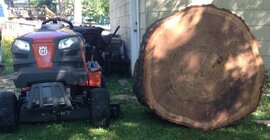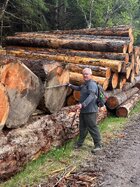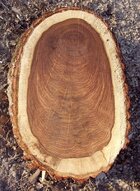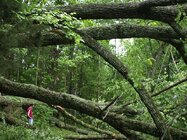I picked up a bunch of wood late last year, from an arborist friend of my parents. He has MOUNTAINS of wood...10-12 feet tall some of them, mountains. He has mostly pine, cottonwood, and a few other native species for Colorado, but he also had some more interesting woods. One was Weeping Willow, and I nabbed a pretty nice sized log of it. It had been drying, oh, quite some time, probably a couple of years...so its got some cracks. I have never cut up a log this large into blanks before...and I am honestly wondering how to proceed. I had hoped to use some of it for a vase, but, I am thinking that might not really be an option with the cracking, and I'd like to get the most out of the wood that is available here, so I am wondering how it could best be diced up.
Dimensions are about ~9-11" D x 31-35" L. It is relatively light weight, so I don't think there is much moisture left, but I can't say that with certainty, there may still be some in the core. One end is a bit angled, the other relatively flat. One side has an area where the bark was torn off before the tree was cut down (not sure how much figure might be in that area, hoping some!)
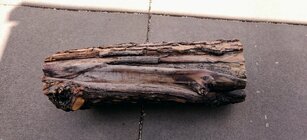
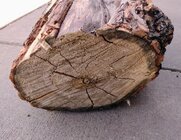
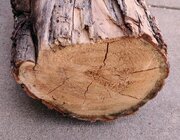
Dimensions are about ~9-11" D x 31-35" L. It is relatively light weight, so I don't think there is much moisture left, but I can't say that with certainty, there may still be some in the core. One end is a bit angled, the other relatively flat. One side has an area where the bark was torn off before the tree was cut down (not sure how much figure might be in that area, hoping some!)




